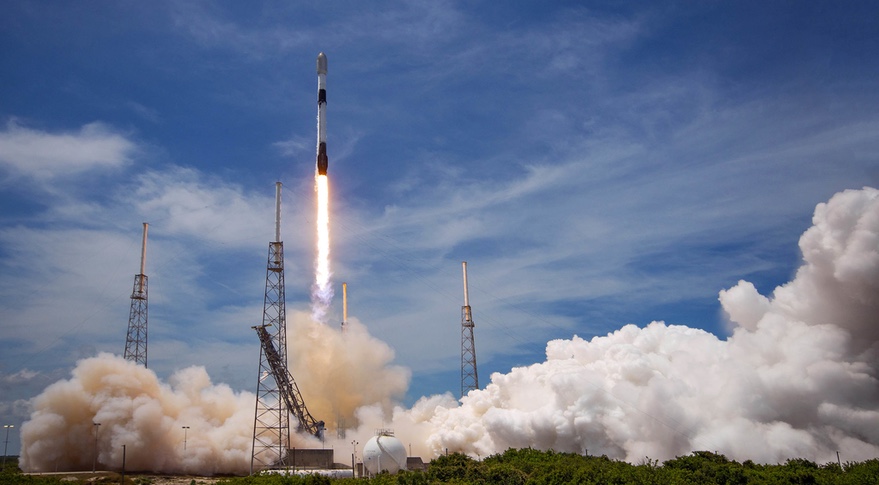SpaceX launched several dozen payloads on its fifth dedicated rideshare mission on May 25, illustrating the continued demand for such missions even as dedicated small launch vehicles emerge.
The Falcon 9 lifted off from Space Launch Complex 40 at Cape Canaveral, Florida, at 2:35 p.m. Eastern. The rocket’s booster, flying its eighth mission, landed back at Cape Canaveral’s Landing Zone One eight and a half minutes after liftoff.
The Transporter-5 mission carried 59 payloads, which SpaceX described as including satellites, orbital transfer vehicles and non-deploying hosted payloads. The latter included Nanoracks’ Outpost Mars Demo 1 experiment to test technologies for cutting into upper stages, Space News reported.
Among the satellites that Transporter-5 deployed into sun-synchronous orbit, rideshare aggregator Exolaunch accounted for 21 satellites, including satellites for Iceye, Satellogic and Spire.
Smallsat manufacturer Terran Orbital flew satellites for several customers, such as Fleet, GeoOptics and NASA.
Other companies that had satellites on Transporter-5 are HawkEye 360, which flew another cluster of three radio-frequency intelligence satellites; GHGSat, which launched three satellites to monitor greenhouse gas emissions; and Umbra, which launched a synthetic aperture radar imaging satellite.
The mission carried several orbital transfer vehicles, including the first from Momentus. Its Vigoride-3 tug carried payloads for two customers, FOSSA Systems and Orbit NTNU, but is principally a technology demonstration of the tug itself and its propulsion system, which uses a technology called microwave electrothermal thruster (MET).
“Testing the MET on this first Vigoride flight is one of the important tasks that we plan to conduct as we continue to refine and improve its performance,” John Rood, chief executive of Momentus, said in a statement after the launch.
The launch marked a culmination of not just technical development of the tug but also securing regulatory approvals after the government blocked two attempts to fly a Vigoride tug last year on other Transporter rideshare missions.
D-Orbit flew its own tug, an Ion Satellite Carrier mission called Infinite Blue, on Transporter-5. The tug will deploy two cubesat payloads and support two hosted payloads.
Spaceflight flew its Sherpa-AC vehicle on Transporter-5 as well. That version of Sherpa includes augmented attitude control capabilities that the company says makes it well-suited for flying hosted payloads. This vehicle carried two hosted payloads as well as three smallsats.
SpaceX announced in March that it would sever ties with Spaceflight, but only after missions already manifested.
Transporter-5 was SpaceX’s fifth dedicated smallsat rideshare mission and the third this year, after Transporter-3 in January and Transporter-4 in April. The next rideshare mission, Transporter-6, is scheduled for October.
Demand for those missions remains strong.
“SpaceX rideshare is getting fully booked,” said Max Haot, chief executive of Launcher, during a panel at Space Tech Expo on May 25. His company is developing its own orbital transfer vehicle, Orbiter, that will make its first flight on Transporter-6.
Launcher has booked Orbiter flights on several more Transporter missions in 2023, and he said those future Transporter missions are already filling up.
Orbital transfer vehicles can help bridge the gap, he said, between pure rideshare missions where payloads have little or no control on the orbit they’re placed in and dedicated smallsat launches like Rocket Lab’s Electron, which offers greater control but at a higher price.
“We’ll be able to make SpaceX rideshare more useful.”


